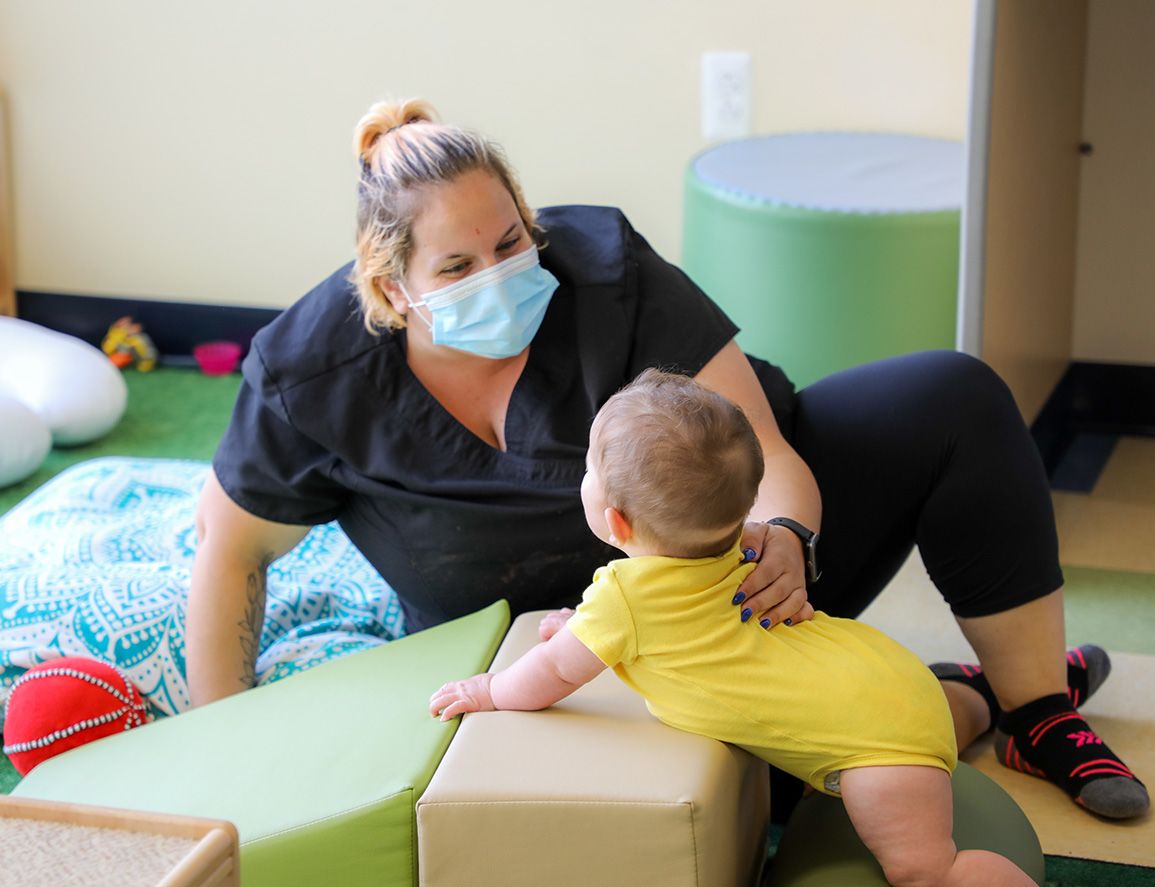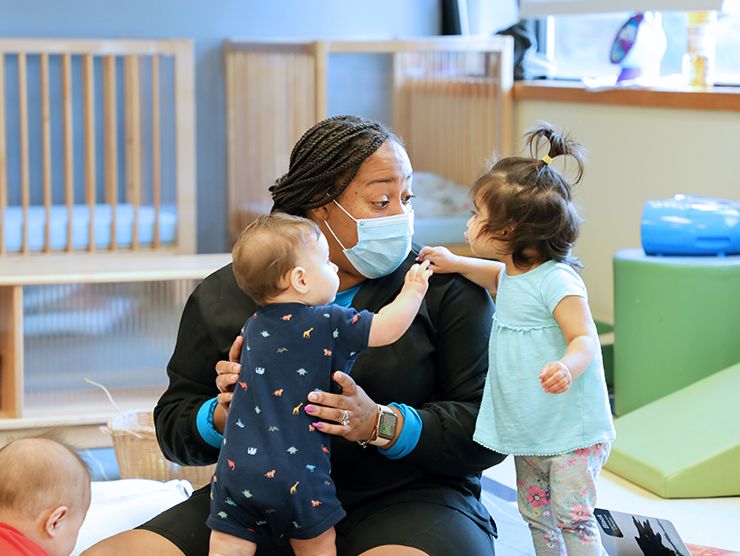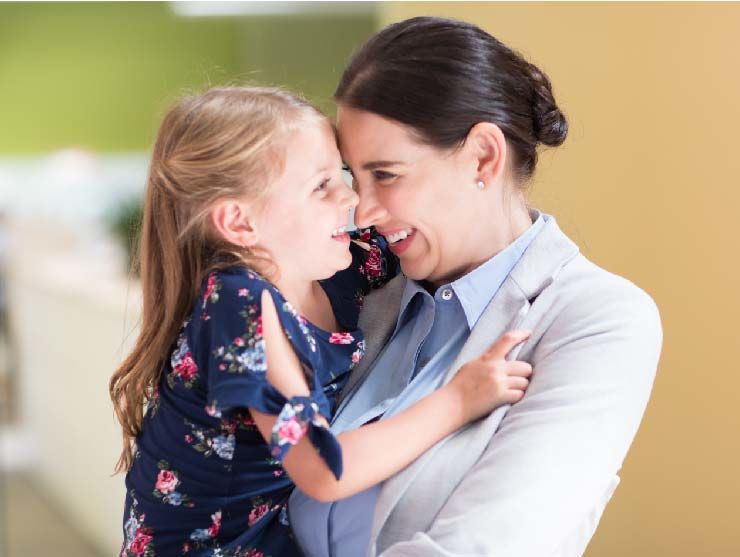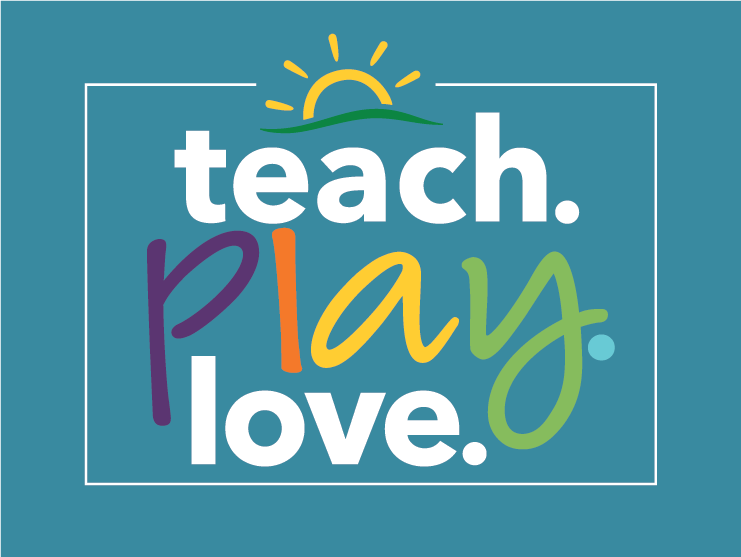The truth is, it’s too early to know definitively, although we’re carefully watching the research unfold. In the meantime, there are several things we do know with certainty about children’s development that can help us mitigate any potential negative effects.
Language and Social-Emotional Development in the Classroom
- Children gather clues about their environment from our body language, eye contact, tone of voice, and affect. Watching faces is just one way young children gain language and develop positive social-emotional bonds with caregivers. When our faces aren’t visible, it’s even more important that we consciously use other verbal and nonverbal communication methods and perhaps even exaggerate them. Bright Horizons teachers use sign language to communicate with babies, a practice that can reduce babies’ frustration and increase their motivation to communicate.
- Children develop relationships with nurturing caregivers as they spend time together. In Bright Horizons classrooms, teachers use everyday moments (Prime Times) to build social-emotional connections with children as they play, sing, read, and talk with children throughout the day. Wearing masks does not diminish these experiences. Numerous studies have shown that healthy social-emotional development is the foundation for all other learning, which is why Bright Horizons places such a premium on it.
- Children benefit from playful, intentional learning experiences. Bright Horizons teachers craft curriculum based on their understanding of child development and their observations of children’s needs and interests. In particular, reading together is one of the best ways to strengthen emotional connections and language. Effective storytelling techniques, such as using exaggerated facial expressions and body language, character voices, and puppets engage children in these experiences. These playful activities are actually based on well-researched language development practices such as serve and return and parentheses (described below).
- Children are resilient. Children tend to adopt the emotional reactions of the adults around them; if we’re okay, they’ll likely be okay too. Our teachers understand this and foster social- emotional skills through modeling and daily experiences, helping children recognize, manage, and respond to their emotions and build empathy for others. As we continue to create loving, stable consistent environments for children, respond to their needs quickly, and talk to them about what’s happening throughout the day, we give them a firm foundation to grow from.
Tips for Introducing and Using Masks
- Introduce masks at home before you go out in public. Put the mask on and take it off several times or play a game of peek-a-boo. Use a calm, reassuring approach, talking and smiling with your baby.
- Play emotional awareness games. Ask your toddler to watch your eyes and describe how you’re feeling. Furrow your brow to show displeasure and smile big with your eyes to show happiness.
- Speak to children about what they will see when they go to school and why their teachers are now wearing masks. Explain that it is to help their teachers and their classmates stay healthy, just like washing their hands and covering their coughs.
- Ask if your daycare or preschool has photos or videos of your child’s teachers that your child can view at home. Pictures of teachers, both in and out of their masks, or a video where they can hear their teacher’s voice can both be helpful.
- Provide pictures to your child’s teachers of you and other family members, even pets! This will help children see familiar faces more often.
7 Ways to Support Language Development and Social-Emotional Growth at Home
- Take the masks off at home. Spend extra time talking, singing, and connecting with your child.
- Read to your child daily. Reading together is a great way to build your child’s vocabulary, love of books, and rhyming, listening, and decoding skills.
- Practice serve and return. Harvard University’s Center on the Developing Child describes serve and return as “child-adult relationships that are responsive and attentive.” Like two people playing a game of tennis, serve and return involves reciprocal back-and-forth interactions. For example: Your child points out the window to a dog. You respond enthusiastically, “Yes, that’s a dog.” Your child claps her hands excitedly and you nod and smile again. “You like that dog, don’t you.” The practice of serve and return has been shown to not only increase language and cognitive development, but to reduce cortisol levels and stress in young children.
- Teach your baby basic signs, such as the signs for mommy, daddy, more, up, or done
- Use parentheses, an exaggerated way of speaking with infants to capture the infant’s attention. It uses simple language with a combination of higher pitch and slower tempo speech. This is different from “baby talk,” the nonsense words and silly sounds that adults often make to babies.
- Try mirror talk. If your baby is babbling into a pretend phone held to the ear, you might say, “It looks like you’re on the phone. Are you talking on the phone?” In mirror talk, you mimic, describe, or expand your child’s words and behavior. If your baby points at a cup and grunts, you say, “You’re pointing at the red cup. Do you want a drink? Okay, let’s get you a drink.”
- Talk with your child’s teacher to learn about the experiences happening at the center. Read the books your child is reading at home or sing the same songs. These at-home activities reinforce the learning occurring at school.
Babies’ brains are wired for language development and emotional connection. We believe there are many ways to facilitate their growth and help them thrive.
“Reading to children at night, responding to their smiles with a smile, returning their vocalizations with one of your own, touching them, holding them – all of these further a child’s brain development and future potential, even in the earliest months.” – T. Berry Brazelton





